Comparing individual aircraft to others of their ilk.
Last month, I described some interesting studies my colleagues and I have been doing with “big data” collected from digital engine monitors aboard more than 7,000 airplanes over more than a million flights. We demonstrated empirically that significantly more flights are flown with headwinds than with tailwinds, that Lycoming CHTs run 20°F hotter than Continental CHTs, and that recently designed airplanes provide better engine cooling that legacy ones (among other things).
Now let’s look at how big data analysis is providing aircraft owners with specific actionable intelligence about their individual airplanes, helping them uncover problems with both hardware and operating technique.
Report cards
Last year, we started generating regular “report cards” to subscribers who have been uploading enough engine monitor data to the SavvyAnalysis platform to support statistically significant findings. These are emailed to the owner, and analyze a dozen or so critical flight parameters related to performance, efficiency, and engine longevity. Most importantly, it compares those parameters with all the other aircraft we follow of the same type. Here’s what such a report card looks like:
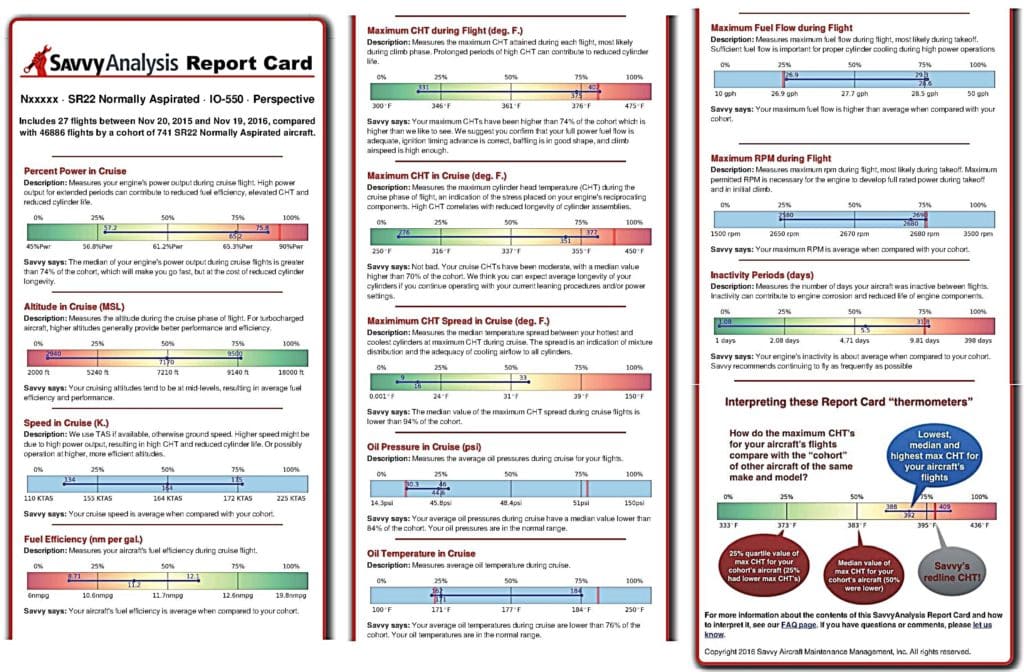
This one is for a normally-aspirated Cirrus SR22. It covers 27 flights that were uploaded to the SavvyAnalysis platform over the past year, and compares them with the corresponding parameters for 46,886 flights in the database for the “cohort” of 741 normally-aspirated Cirrus SR22s that we follow.
For each of the dozen analyzed parameters, the report card presents a “thermometer” that graphically shows the minimum, maximum, and median value of the parameter for the particular airplane, and how those compare with the distribution of median values observed in the entire cohort. Each thermometer is followed by textual commentary that advises whether we think the values for the subject aircraft are normal or abnormal, and (if abnormal) offering suggestions for corrective action.
Let’s examine some of the thermometers from this Cirrus’s report card:
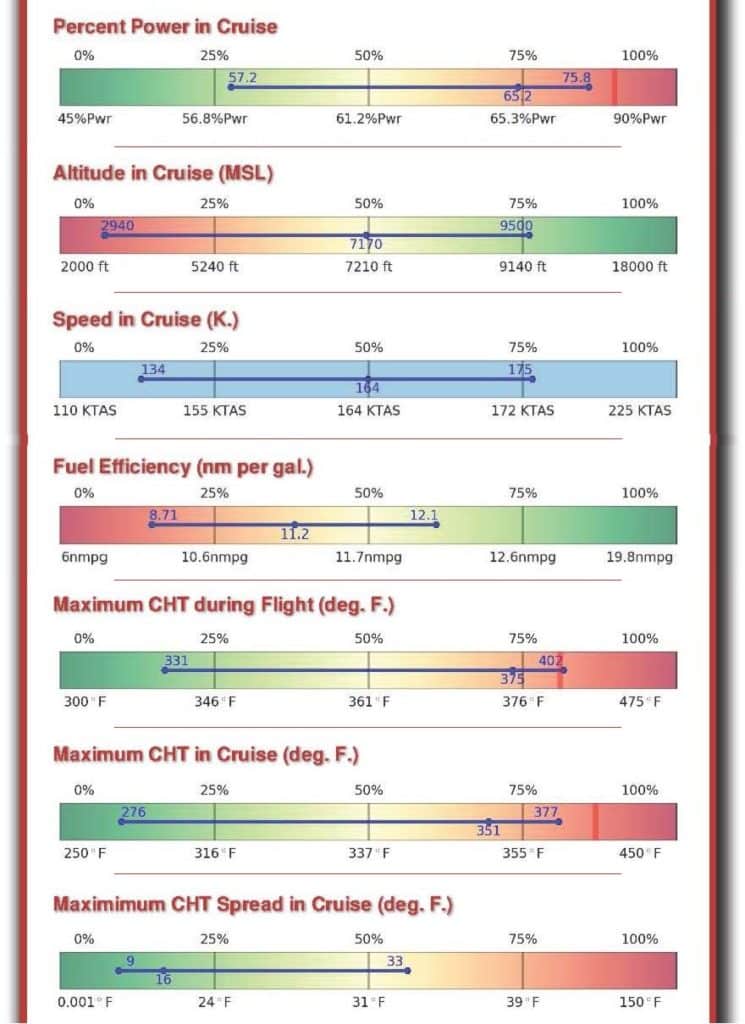
Report card thermometers
This aircraft cruised at a median 65.2% power, higher than 70% of the cohort, so I’m guessing the pilot wanted to fly fast. Interestingly, however, the aircraft’s median cruise speed of 164 KTAS was right in the middle (50th percentile) of the cohort, and the median cruise altitude of roughly 7,000’ MSL was also right in the middle. The median fuel efficiency of 11.2 nm/gallon wasn’t exactly stellar, falling in the 38th percentile. The aircraft’s CHTs both in climb and cruise are higher than normal (75th and 70th percentiles, respectively). These elevated CHTs don’t seem to be due to any flaw of the aircraft’s cooling system, because the CHT spread among the six cylinders is exceptionally low (20th percentile).
So this owner is cruising at higher power than most Cirrus SR22 pilots, getting mediocre fuel economy, running high CHTs, and yet not getting any extra airspeed to show for it. Maybe he should have his aircraft rigging checked and work on his engine operating technique (as in “LOP”). This is what I mean by “actionable intelligence.”
Alerts
SavvyAnalysis generates report cards monthly, quarterly or annually, depending on how active the aircraft is and how much data the owner uploads. But sometimes the software sees something in the data that is urgent and just can’t wait. That’s when the system emails an “alert” to the owner. Here’s an actual (de-identified) one that was sent to the owner of a Mooney M20J alerting him that his CHT and oil temperature were way too high (96th and 97th percentile of the cohort), and suggesting he take corrective action right away:
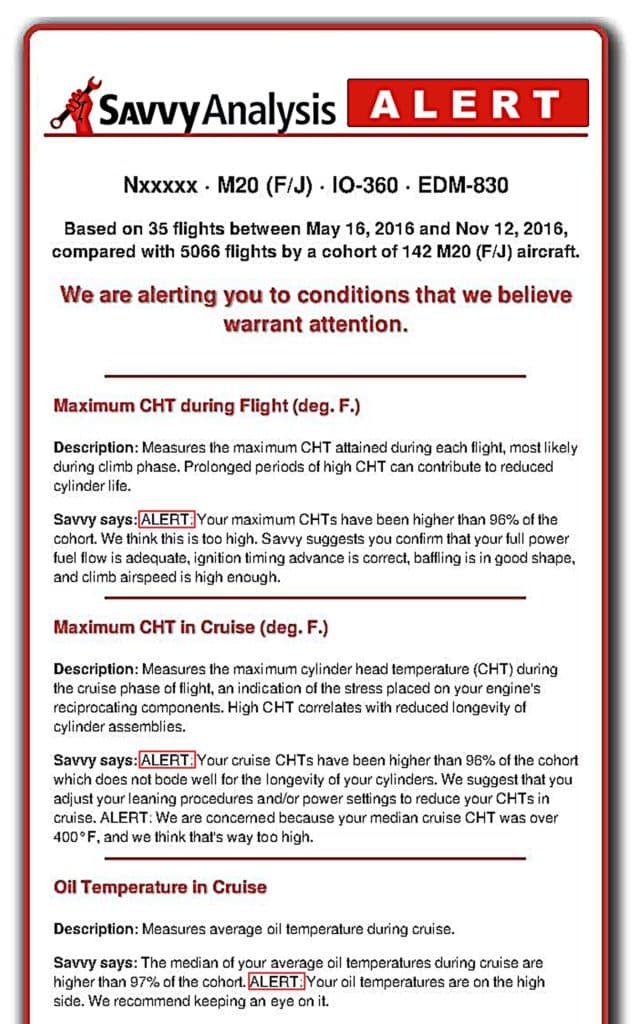
Exhaust valve failure
Many years ago, I discovered an interesting phenomenon: When exhaust valves start to burn and leak in piston aircraft engines, they often produce an oscillation in the cylinder’s EGT that can be used to detect incipient exhaust valve failure. The characteristic signature is subtle: a slow rhythmic EGT oscillation with a period of roughly one cycle per minute and an amplitude of 30 to 50 degrees Fahrenheit (2% to 3%).
Two years ago, we enhanced the SavvyAnalysis platform to scan all uploaded data for such signatures so we could alert aircraft owners to them. We call this FEVA (“Failing Exhaust Valve Analytics”). Here’s a case involving a Cirrus SR22:
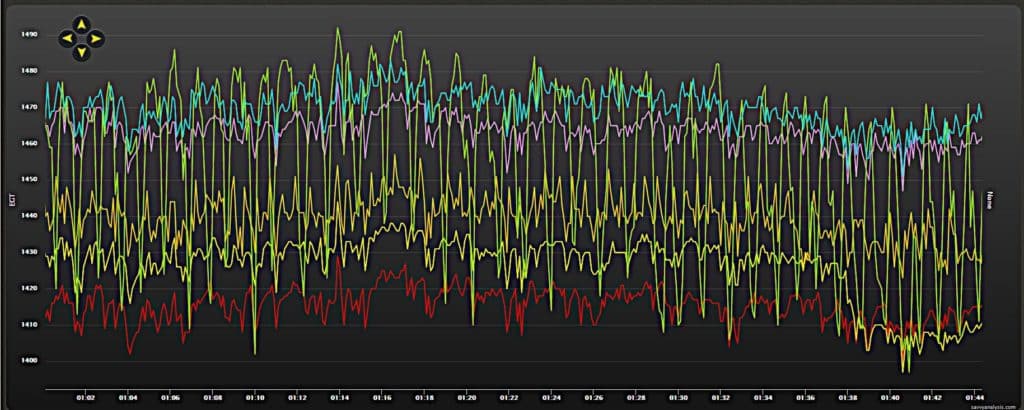
Those EGT traces are a mess, very noisy, hard to make sense of them. But if we split out the EGT for cylinder #5 from the pack, it’s obvious that there’s something different about that cylinder:
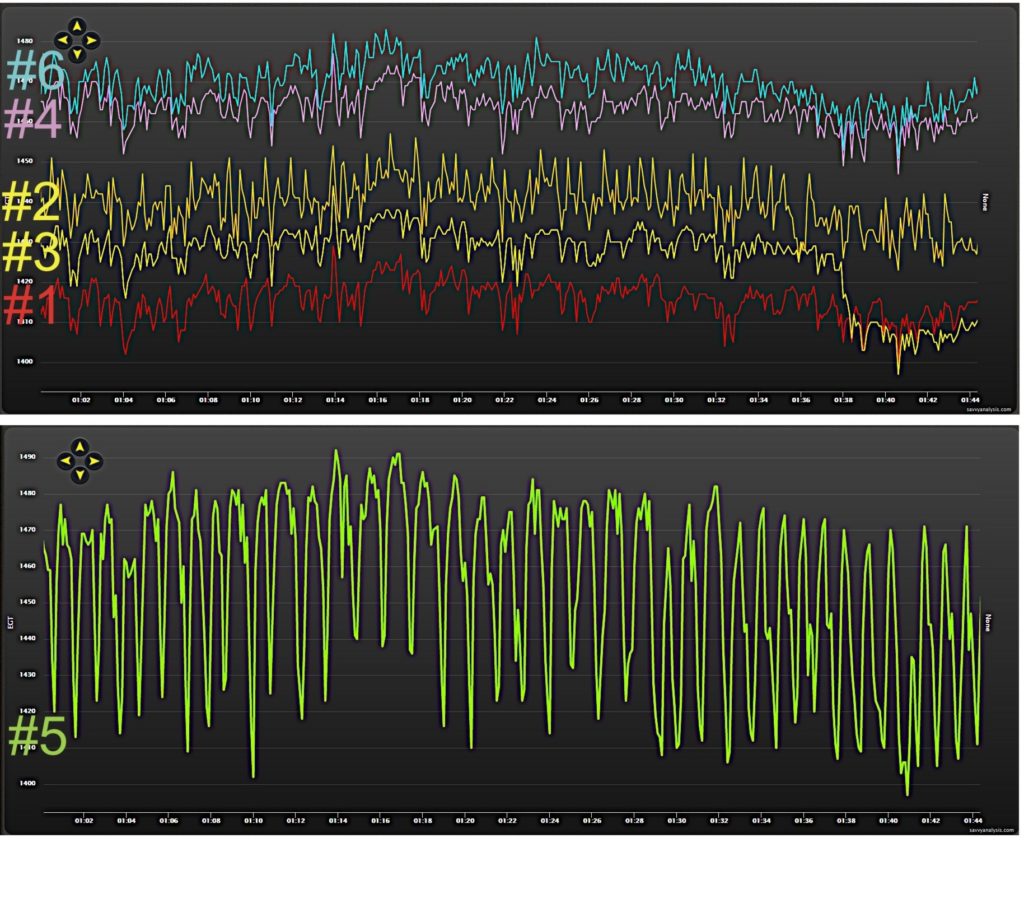
Cylinder #5 is exhibiting precisely the slow rhythmic oscillation indicative of a failing exhaust valve, while the other cylinders aren’t. We alerted the owner, and he emailed us a photo showing what that exhaust valve looked like:
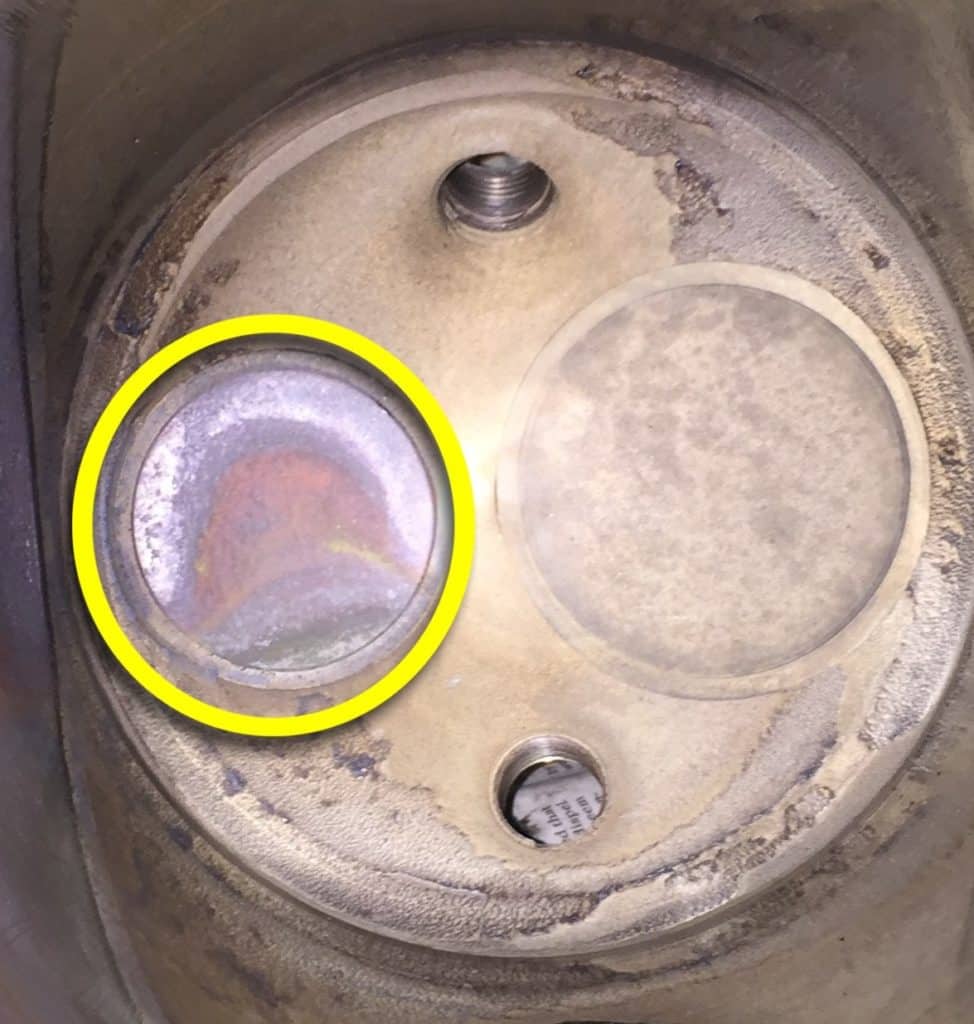
Ouch! Clearly if that valve had remained in service much longer, it would have failed outright.
Here’s another example of a FEVA alert from a Cessna 340:
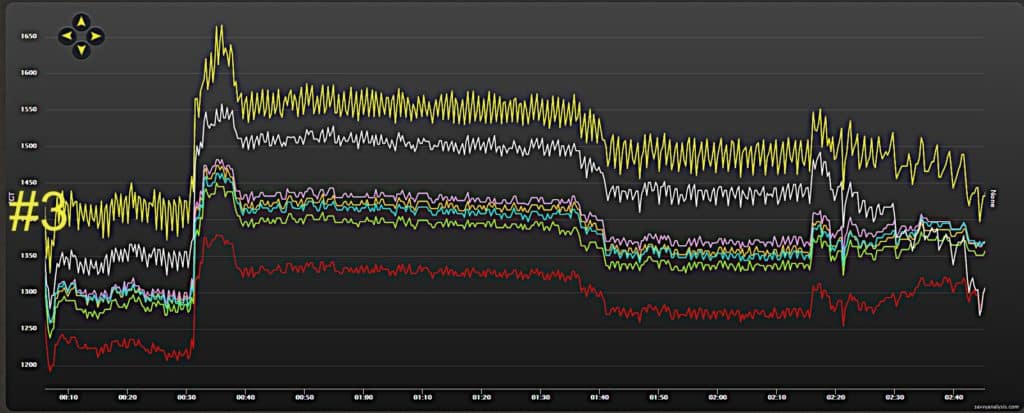
Here the slow rhythmic oscillation of EGT #3 (yellow trace) is quite obvious, and is also reflected in a more subtle oscillation of TIT (white trace), while the other five cylinders look normal. Here’s what the owner found (and photographed) when cylinder #3 was pulled:
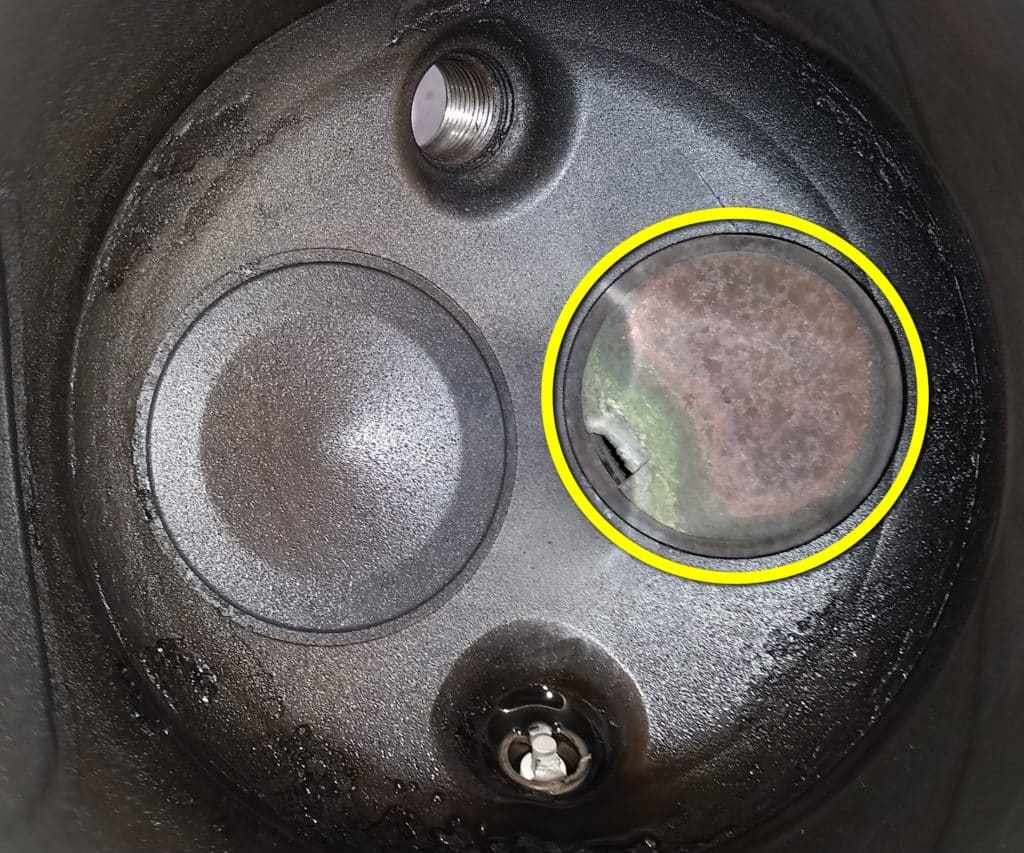
Unfortunately, this Cessna 340 owner wasn’t in the habit of uploading his data on a regular basis. He didn’t upload this data until after his engine started running rough, so didn’t receive a FEVA alert in time to head off the valve failure. The moral of this story is obvious.
You bought a plane to fly it, not stress over maintenance.
At Savvy Aviation, we believe you shouldn’t have to navigate the complexities of aircraft maintenance alone. And you definitely shouldn’t be surprised when your shop’s invoice arrives.
Savvy Aviation isn’t a maintenance shop – we empower you with the knowledge and expert consultation you need to be in control of your own maintenance events – so your shop takes directives (not gives them). Whatever your maintenance needs, Savvy has a perfect plan for you: